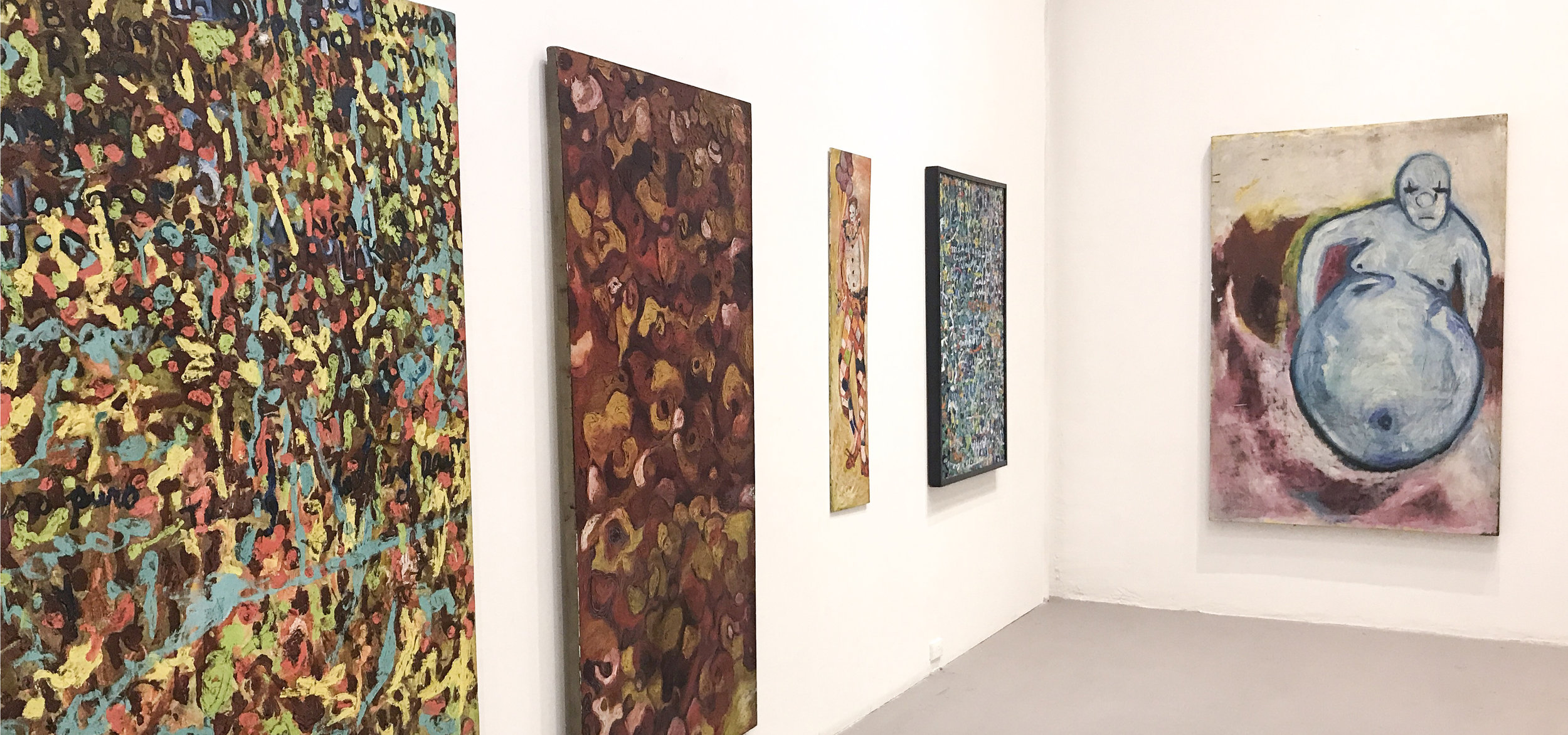Una't Huli
DRANREB BELLEZA
april 5 to April 14, 2018
In Una’t Huli, Dranreb Belleza presents selected works that span his entire career as painter. In this selection we see a development not merely of a way of looking at things but also ways of mediating the self that conceals as much as it discloses, that makes material translate memory, affect amplify articulations. In Belleza’s we see the graphic intertwine with the painterly and produce an interesting interaction: the heavy overlaying and repetitive application of paint in an abstractionist manner that resists correctness in orientation is here oriented by text, the text also framing how the painting is read, so to speak. Another point of interest is the extension of the logic of the painterly into unconventional procedures of marking the surface, which for Belleza’s work is usually a wooden panel. This involves cracking paint and peeling it off, in this sense, a scarring of the surface. Admirable in Belleza’s case is an intuitive process of making the material form and form, material.
The autobiographic as an aesthetic consideration also deserves interest. The clown becomes a recurring figure in Belleza’s autoportraits. The obsession with this typology—the bald head, rotund belly, the sad eyes, a single tear—marks an understanding of the artistic endeavor as something personal, and for Belleza it is indeed baring the soul, revealing the self but always as it is mediated by canvas and paint. Although this has been done time and again, what makes Belleza’s works specifically poignant is their calibration of concealment and disclosure—the careful opening of the self, ever so gently, like peeling a fresh scab from a wound. It is Belleza’s gift to articulate pain and preserve it as a work of art, or paraphrasing a beloved poet, as formal feeling after great pain.





